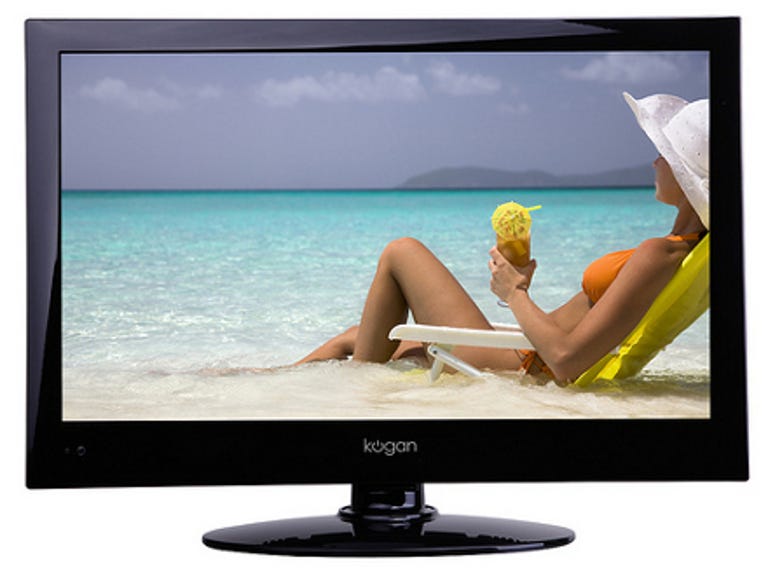 Why You Can Trust CNET
Why You Can Trust CNET Kogan Elite LED22 review: Kogan Elite LED22
The Kogan Elite LED22 has some neat features, such as its USB recording capability, but its performance in terms of colour and contrast performance is disappointing.
Kogan is an Australian budget-electronics company that has recently taken a 24-hour flight over to the UK. The company only sells online and claims to pass on the consequent savings to the consumer. The 22-inch Elite LED22 TV is certainly cheap, at around £170, especially as it offers LED backlighting, a 1080p panel, and USB recording features.
The Good
The Bad
The Bottom Line
Cookie-cutter design
The TV doesn't break the mould when it comes to styling. It's finished in the same glossy black that you'll find on most budget sets. It looks reasonably attractive, though, thanks to its gentle curves and slim chassis.
Using edge-mounted LEDs, instead of traditional CCFL backlighting, has allowed Kogan to get the chassis down to just 48mm thick, which is pretty impressive for a TV of this size -- most small-screen models are quite bulbous. The build quality is generally good, although the tilting stand does feel rather lightweight.
You shouldn't be stuck for ports when it comes to connecting up other gear such as set-top boxes or games consoles to this TV. Around the back, you'll find two HDMI sockets, as well as a Scart socket, S-Video input and VGA port. There's also an optical output for feeding the audio from the on-board Freeview tuner to an external amp, and a USB port for the digital recording features, but more on those later.
The Freeview tuner is standard-definition only, so you can't use it to pick up the high-definition services from the BBC, ITV and Channel 4, but that's understandable given the set's low price tag.
The electronic programme guide isn't the best, though. It's well presented, but it uses a vertical, rather than horizontal layout, and, by default, when you first open it up, it only displays the programmes that are currently showing across all channels. If you want to see upcoming shows, you have to switch to the channel view, but, even then, it only displays the shows for a single channel at a time, which makes it awkward to spot clashes. Overall, the EPG feels more cumbersome than that of most tellies.
If you plug a memory stick or hard drive into this TV's USB port, you can use pause live TV or record whole shows. The recording features are very easy to use, and you can schedule recordings using the set's EPG just as you would with a normal PVR. But, as the set only has a single tuner, you can't watch one show while recording another.
Heady HD
Unlike many smaller-screen displays, the LED22 uses a 1080p panel, rather than a HD Ready one. This means it can show movies from Blu-ray discs in all their 1080p glory. In fact, the TV works best when it's dealing with HD sources, as this is when colours and sharpness are at their most impressive.
The TV isn't so hot when working with standard-definition material, however, as colours tend to look over-egged, especially skin tones. This is most noticeable when you're watching TV via the on-board Freeview tuner.
Also, the LED22's contrast performance isn't great. It tends to lend images a relatively dark, muddy feel. Unfortunately, using the set's menus to increase the brightness and contrast, in an effort to combat this, only tends to wash out the black level. It's impossible to get a really good compromise.
Given the set's small size and slim chassis, it's no surprise to find that it doesn't exactly deliver earth-shattering audio quality. Although its 3W speakers are fairly loud, they're also tinny and, even when you crank up the bass, it struggles to produce much low-end response.
Conclusion
Overall, we are impressed with the Kogan's Elite LED22 low price and easy-to-use recording features, especially as the set makes it such as cinch to schedule recordings using its EPG. Pictures also look pin-sharp when watching HD material. But the panel's contrast performance isn't all that good and colours can be unruly. Certainly, Logik's cheap L19DVDB20 is a better performer in terms of overall image quality.
Edited by Charles Kloet


